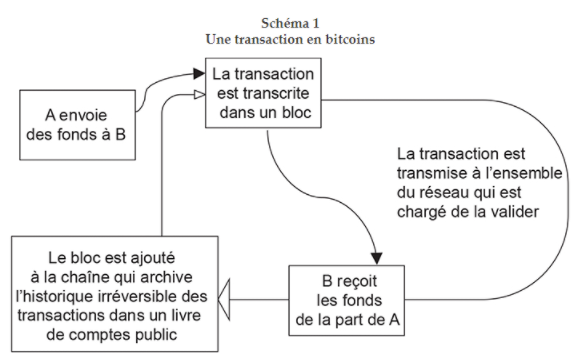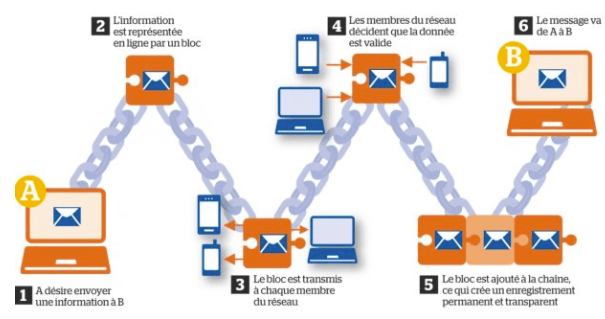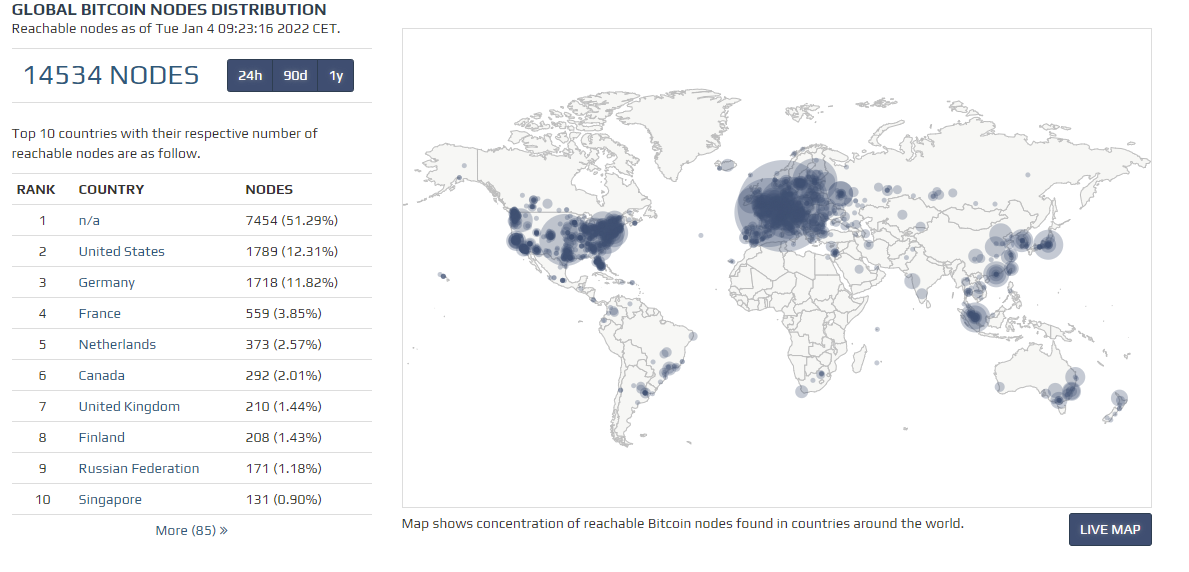What is trust?
It is not easy to define the concept of trust. Moreover, there are different scientific and philosophical currents to define it. Let us start from the simple principle that trust can be defined, as the dictionary provides, from “be able to trust an individual or a system”. Trust can take various forms: trust in a friend, in a healthcare professional, in God, in a government or even in a currency. I could even say in a vaccine, but I wouldn’t make all friends. Note that confidence does not require a complete mastery and understanding of all the technical components that make up a particular system.
For example, it is not necessary to understand the technical operation of an airplane to be “sure” that the airplane will fly safely and arrive at its destination. Confidence can be achieved through previous experiences and general knowledge accumulated over time. In the case of an airplane, we have the common knowledge that very few planes crash and we have confidence in the engineers who have designed, tested and validated all the parts of the plane as well as in the multitude of regulations of security that constrained the airlines so that the trip goes safely.
But as we have seen or experienced, this trust can be lost or at least crumble. Whether it is towards a person or a system. Let’s get back to our planes. The fatal accidents of the Boeing 737 Max in 2019 automatically engendered a decrease in confidence in this category of aircraft both on the passenger side and on the flight crew side: “We need to be able to trust Boeing to honestly disclose the information necessary for the safe operation of our planes.“, Captain Jonathan Weaks, President of the Southwest Airlines Pilots Association (SWAPA). It shows how quickly the notion of trust can be depleted. Aviation is one example, but it applies to everyone sectors, and the media are no exception, regularly singled out for disinformation.
Evolution of trust in the media
Source: Statista
The blockchain: elimination or maximization of trust?
The 2008 financial crisis, which was in part attributed to the inability of traditional institutions to contain a financial crash, sparked a resurgence of interest among individuals in the concept of trust. More recently, the abuses of some leading companies in the marketing of personal data, and sometimes for some, accused of misinformation and public coercion have eroded the confidence of users in these private entities. But how could blockchain resolve this concern for trust?
We can consider that the need for trust lies where uncertainty reigns. Others may be in default by not keeping their commitments, a sovereign authority may be weaker than one thought, a company holding personal data may be hacked, a man may corrupt his faith in God … Philosophically, the blockchain then tends , through mathematics and algorithms, to enable individuals to deal with each other by eliminating the need for trust. Conceptually, this technology tends rather to maximize the degree of trust to the point of no longer worrying about the need for trust.
The example of Bitcoin: confidence in mathematical rigor
In the case of Bitcoin, anyone who understands the Bitcoin protocol can be confident that the network will generate a particular amount of new bitcoins (6.25, bitcoins) under specific conditions (whenever a miner finds the mathematical solution to shut down. a block with the mathematical hash function) and at a particular pace (within an average of 10 min), without needing to rely on any financial institution or other centralized authority. In addition, since anyone can own a copy of the blockchain (for more than 300 GB), users can collectively review and verify all transactions executed on the network (since its creation), to ensure that they are all comply with the rules of the protocol.

Source: aef.asso.fr
The functioning of the remuneration of minors and therefore of the validation of transactions, called “proof of work” will be the subject of a future episode, here we confine ourselves to the concept of trust. Remember for this episode, that miners are those who connect their computers (using mining equipment) to the blockchain (thanks to the installation of software). Once connected, computers (called “nodes” on the blockchain) verify transactions and validate blocks in the chain and therefore implicitly transactions. We then understand that it is necessary to have confidence in the minors who validate our transactions.

Diagram of a transaction on a blockchain
Source: Changethework.com
Bitcoin blockchain: corruption is squeezed out
Since minors are ultimately controlled by individuals and therefore may be bribed or bribed, additional safeguards need to be introduced into these systems to further reduce the need to trust an individual miner. On the one hand, Bitcoin’s “proof of work” consensus algorithm (although there are others) is intended to distribute trust among a wide variety of miners, thereby reducing the risk of individual opportunism. (transactions are verified by the entire network and not by a single miner who would act as a central authority). On the other hand, since all nodes (computers connected to the network) hold a copy of the blockchain (it is a condition for mining), they can always verify that every recorded transaction is valid and legitimate. Therefore, anyone interacting with the Bitcoin blockchain can have a high level of confidence that they will perform as intended, as every transaction is traceable by everyone. Hence the widely used adjective concerning the Bitcoin blockchain, which is said: tamper-proof. Finally, unlike a centralized entity, if a node were to fail, the whole system would not be called into question because all the other nodes in the network would take over (since everyone has the same data history). Whereas today, when a central entity is hacked, the whole system is paralyzed.
The limit to the system: trust is misplaced
Trust can never be completely eliminated, it is partially displaced to developers and miners in the network. Therefore, although the blockchain protocol can help increase confidence in how transactions will be processed, such a degree of confidence is only possible to the extent that the network of miners can be trusted as well as for the main developers of the network to act in a way that does not compromise the security, reliability and predictability of the blockchain-based system. The source code could be changed if the majority of the network so decided. Confidence is finally put back into the hands of the network and all of its stakeholders. A network that is however transparent and accessible to all.
For now, the Bitcoin network has proven to be inviolable and flawless since its inception, and the constant increase in the number of nodes favors its degree of decentralization, as more and more machines check the blocks so that they are legitimate.

Number of nodes on the Bitcoin network and its geographical distribution
Source: bitnodes.io
Here, we understood that the blockchain is reinventing the concept of trust. Decentralized trust (across all nodes) and transparent (because accessible to all) which eliminates the need for trust. Or at least move it to several entities using a transparent mathematical algorithm, rather than a single central entity with, most often, opaque means. Do you remember when I said a little above that “Confidence can be obtained through previous experiences and general knowledge accumulated over time ”. As with airplanes, the blockchain must accumulate general experiences and knowledge by its users and observers for it to be potentially widely adopted. Confidence will follow.
In this saga we are going to accumulate the knowledge to be informed and to be able to better understand this technology if it ever becomes necessary, to a certain extent, in our daily life.
If this technology makes it possible to transfer the trust of traditional centralized entities to a decentralized network populated by miners, several questions arise. How can we trust this decentralized trust? What prompts miners to spend energy recording transactions? How are we identified by minors (public key and private key)? Is a cessation of the activity of minors and therefore of the validation of transactions possible? After understanding that the nation of decentralized trust is allowed with the blockchain, we will in the next episode explore the ins and outs of the mining system. Ultimately the heart of blockchain trust. See you in the next episode.
Episode 1: Web 3.0 attacking GAFAM?
Episode 2: Web 3.0 just a click away to protect our personal data
Episode 3: Web 3.0, the next logical step?
